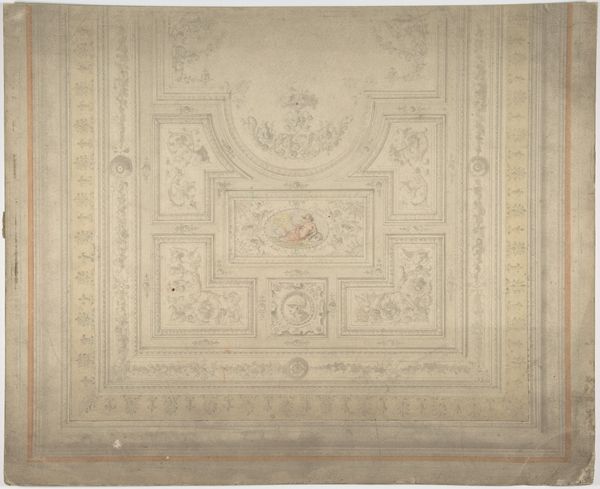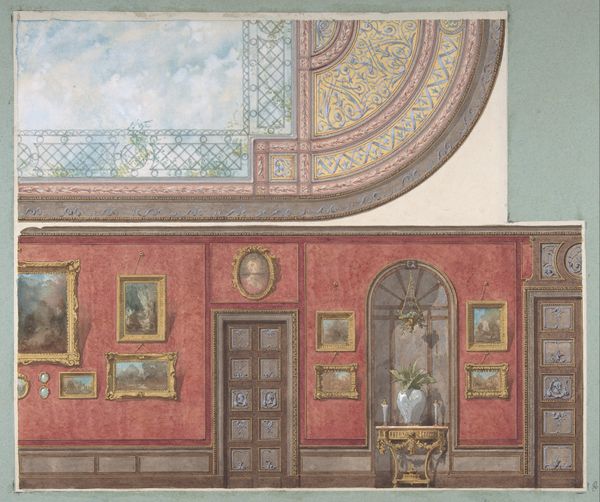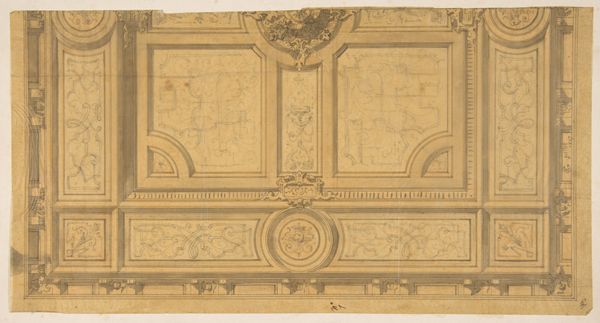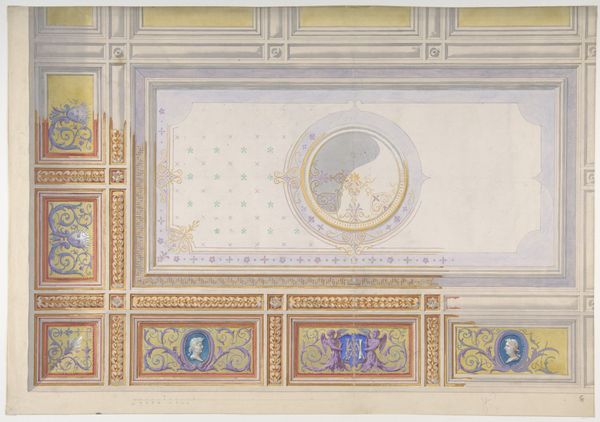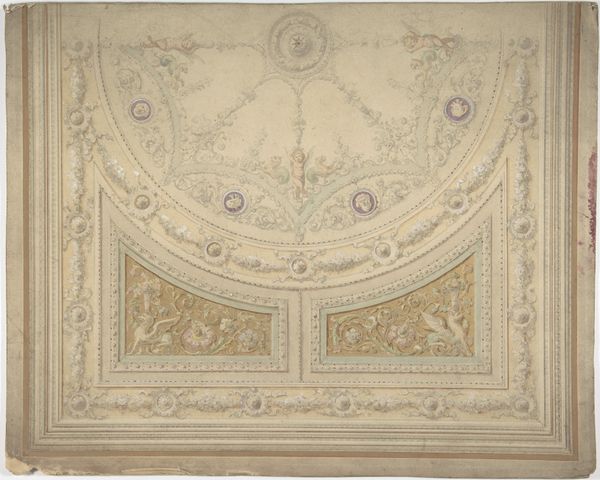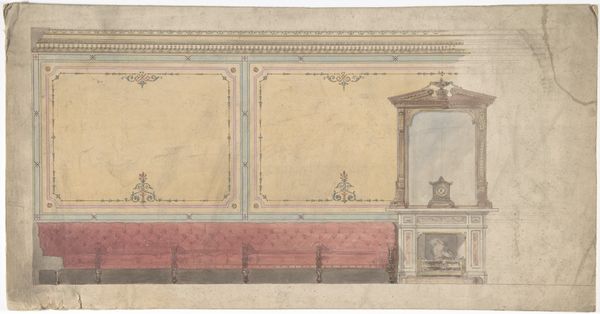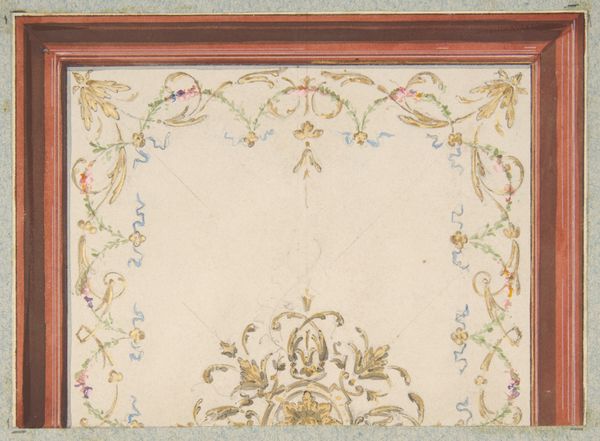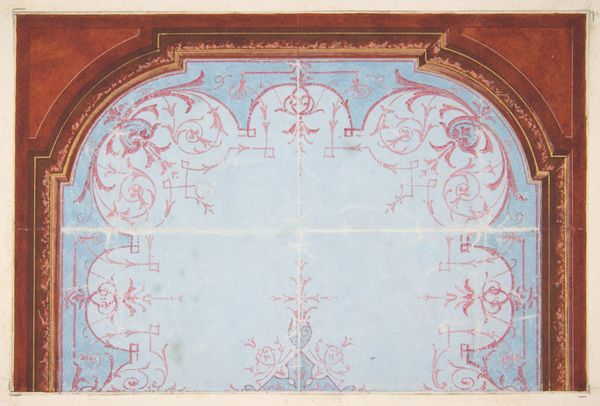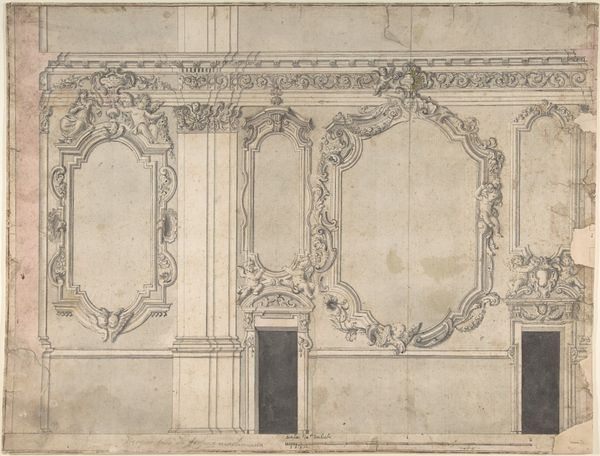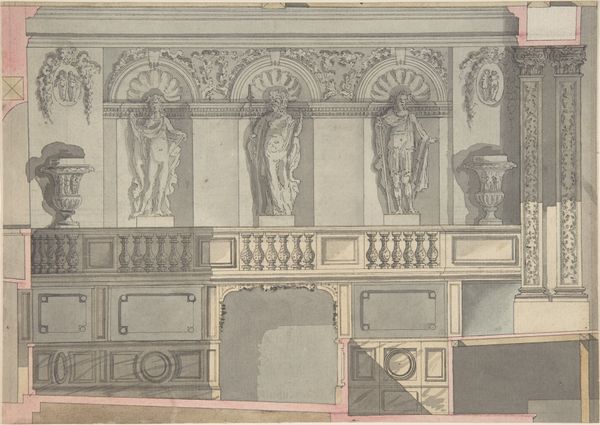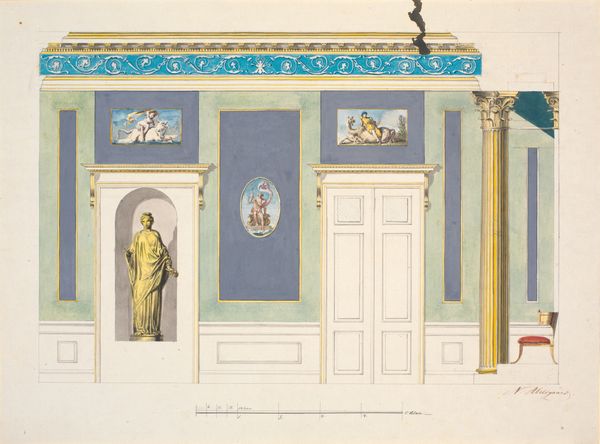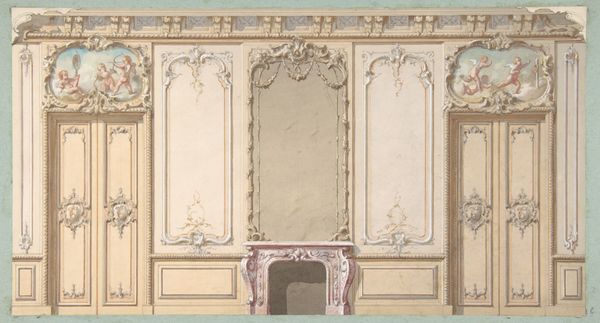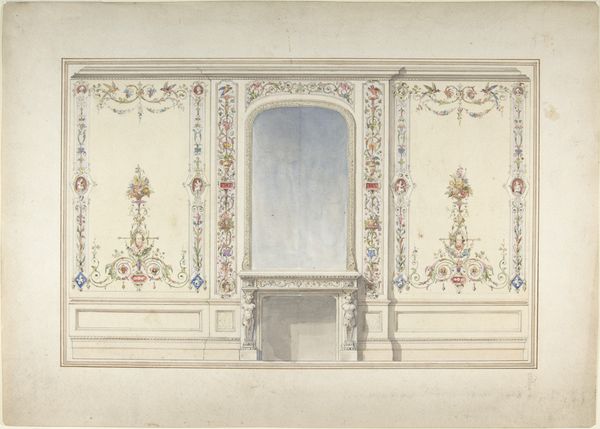
Wall Design including an Equestrienne Portrait 19th century
0:00
0:00
drawing, painting, print, oil-paint
#
portrait
#
drawing
#
allegory
#
painting
# print
#
oil-paint
#
landscape
#
figuration
#
romanticism
#
horse
#
cityscape
#
genre-painting
#
history-painting
#
academic-art
Copyright: Public Domain
Curator: We are looking at a watercolor drawing entitled "Wall Design including an Equestrienne Portrait." It was created in the 19th century and resides at the Metropolitan Museum of Art. Editor: Immediately, the drawing feels serene, almost ethereal. The muted colors and the intricate paneling create a sense of refined, almost decadent, interior design. There is also something unfinished about it— perhaps an indication of an imagined design still in development. Curator: Indeed. The composition presents a proposed wall decoration, divided into panels. One features a delicate floral design, while the central panel showcases an equestrian portrait. There are interesting dichotomies between nature and artifice at play. Editor: Looking closer at that portrait within the drawing, it does more than just suggest decorative style. An equestrian figure becomes enmeshed with class and status in the 19th century. I imagine a narrative in which women used horses to display their affluence while further solidifying control over their external appearance. Curator: It's interesting to consider how the placement of the equestrian portrait functions within the overall structure. Framing it on the wall and within this larger rendering emphasizes a play between two-dimensional and three-dimensional spaces and perspectives, with visual echoes reverberating across both panels through motifs like oval patterns and flower bouquets. Editor: I wonder, too, what this design suggests about access, exclusion, and performativity. For instance, what social conditions allow some people leisure, land, and the means to perform the rituals of horsemanship, and how are those lifestyles memorialized? Is there any acknowledgement of that within these design choices, or simply aspirational longing? Curator: The drawing certainly provides ample space for reflection on the social stratification of the era. When looking closer at this design’s more delicate, intricate patterning, it underscores a sense of balance, one further highlighted through visual parallels throughout both the illustration and the design it contains. Editor: Perhaps what stands out most is the conversation this artwork allows between material reality and pictorial representation. It asks the viewer to engage critically, consider multiple angles, and resist simplistic notions about leisure and the social hierarchy that supported its visual expression. Curator: This brief journey with “Wall Design including an Equestrienne Portrait" prompts further exploration of formal structures and the layered meanings within its artistry. Editor: Yes, the sketch unveils more profound connections between aesthetics, ideology, and lived experience, underscoring why these inquiries are perpetually meaningful.
Comments
No comments
Be the first to comment and join the conversation on the ultimate creative platform.
